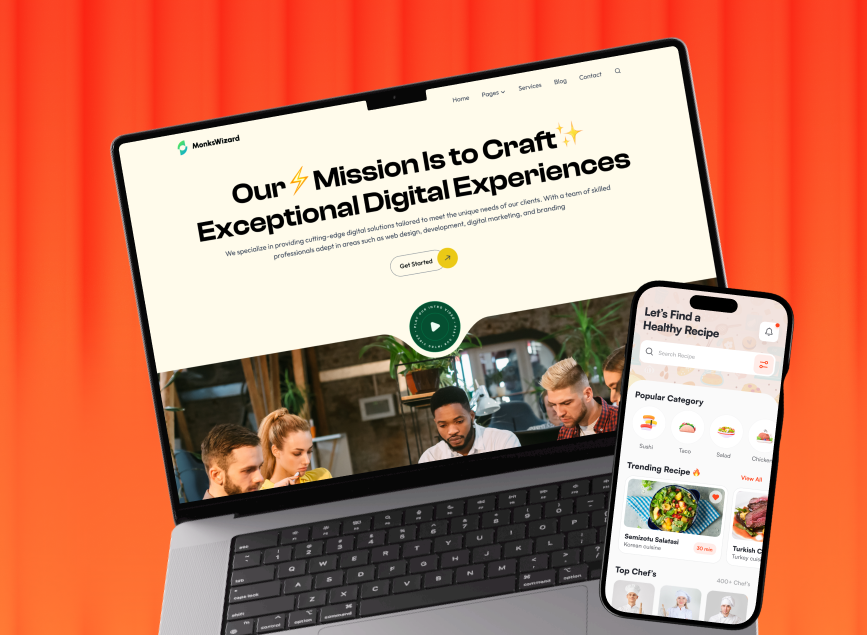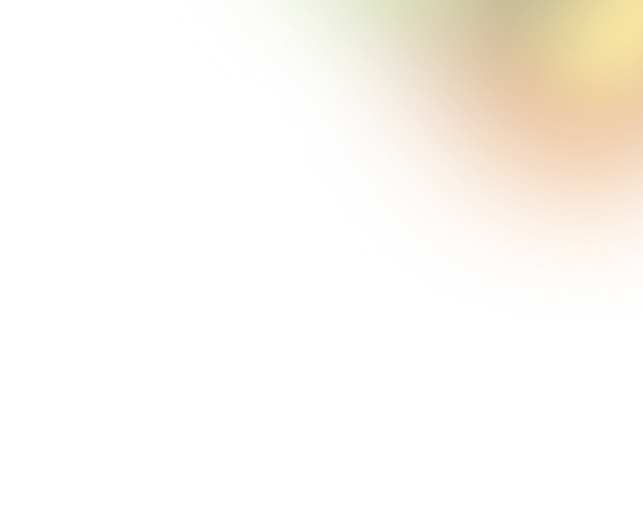
Key Takeaways
- Vision Pro introduces spatial computing, transforming UX design beyond traditional screens.
- AR and 3D interfaces allow designers to create immersive, context-aware experiences.
- New input methods like eye-tracking, gestures, and voice require design adaptation.
- Spatial audio and EyeSight enhance collaboration, immersion, and social interactions.
- VisionOS and ecosystem partnerships provide designers tools for innovative UX workflows.
Apple’s new Vision Pro headset, unveiled by CEO Tim Cook at WWDC 2023, is set to change the game in the technology world. This cutting-edge device introduces a new era of augmented reality (AR) and spatial computing. Vision Pro is not just another gadget; it represents Apple’s dedication to breaking new ground in innovation.
But what does this mean for the UX design industry?
Vision Pro is poised to revolutionize the field and offers designers new ways to create immersive and intuitive user experiences.
However, let’s learn how Vision Pro will transform UX design and reshape our interactions with technology, making the digital world more engaging and accessible than ever before.
What Is Apple’s Vision Pro?
Apple’s Vision Pro is a groundbreaking augmented reality (AR) headset that marks a significant leap in spatial computing technology. Declared first by CEO Tim Cook at WWDC 2023, the Vision Pro integrates cutting-edge hardware and software to create immersive and interactive experiences that blend the digital and physical worlds.

Basic Features of Vision Pro:
- Sleek Design: The Vision Pro boasts an elegant design with an aluminum frame and curved glass front, giving it a look reminiscent of ski goggles. It is designed for comfort and style, making it suitable for use in controlled environments like homes and offices.
- Advanced Optics: It features high-resolution displays and advanced optics that deliver stunning visual quality, enabling detailed and lifelike AR experiences.
- Intuitive Controls: The device includes a physical button for image capture and a digital crown for adjustments, ensuring easy and intuitive control. A flexible strap and comfortable visor enhance user comfort and focus.
- Augmented Reality Capabilities: Vision Pro’s AR capabilities allow users to overlay digital information onto real-world objects and create interactive 3D environments, significantly enhancing the user experience.
- Spatial Audio: Equipped with spatial audio technology, Vision Pro provides an immersive sound experience, making users feel as if they are in the middle of the action.
- EyeSight Technology: This feature uses eye-tracking to enable natural and collaborative interactions between users and digital content, enhancing social presence and collaboration.
- Productivity Focus: Designed with a work-first focus, Vision Pro aims to enhance productivity by providing immersive virtual workspaces and tools that make tasks more efficient and enjoyable.
It combines aesthetics, functionality, and advanced technology in a single place. Thus, Apple’s Vision Pro is set to revolutionize the UX design industry and transform how we interact with digital content.
How Vision Pro Will Revolutionize The UX Design Industry?
Apple’s Vision Pro headset is set to redefine how users interact with digital content and how designers approach UX design. Let’s explore how Vision Pro is poised to transform the UX design industry across several dimensions.
Something New From the Traditional Displays
One of the most significant impacts of Vision Pro will be its ability to break free from the limitations of traditional displays. For decades, UX design has been confined to rectangular screens, phones, tablets, and monitors.
Vision Pro shatters this paradigm as it lets digital content be placed in the physical world, freeing designers to think outside the box, literally and figuratively.

This shift means that UX designers will need to consider spatial relationships and real-world contexts when designing user interfaces.
Instead of flat, two-dimensional layouts, they will design three-dimensional experiences that users can interact with naturally. It simply opens up endless possibilities for innovative designs that blend seamlessly with the user’s environment, making interactions more intuitive and immersive.
Aesthetics and Functionality Combined
The Vision Pro headset exemplifies how cutting-edge design can seamlessly blend aesthetics with functionality, setting a new standard for the UX design industry. The device features an elegant aluminum frame and a curved glass front, giving it a sleek appearance reminiscent of ski goggles.
This design choice clearly signals that the Vision Pro is intended for use in controlled environments such as homes and offices, where comfort and style are paramount.
Key design elements of the Vision Pro enhance its user-friendly nature. The inclusion of a physical button for capturing images and a digital crown for making adjustments ensures that users can easily control the device without needing to fumble with complex menus. These intuitive controls make the device accessible and straightforward to use.
Additionally, the Vision Pro is equipped with a flexible strap and a comfortable visor, which help keep the headset securely in place and shield the user from external distractions. This thoughtful design ensures that users can remain focused on their tasks, whether they are working, learning, or enjoying immersive content.
By prioritizing both form and function, the Vision Pro sets a new benchmark in the design of wearable technology, promising to revolutionize the way we interact with digital content.
Augmented Reality and Spatial Computing
Vision Pro’s strong emphasis on augmented reality (AR) distinguishes it from previous mixed reality devices, poised to revolutionize the UX design industry. It seamlessly merges digital and physical worlds to let UX designers create experiences that enhance the user’s perception of reality.
This technology also lets the information be overlayed onto real-world objects, providing users with relevant and contextual data at a glance. Additionally, designers can craft interactive 3D environments that users can explore and interact with, making experiences more engaging and immersive. The potential for designing rich, contextually aware experiences is vast, opening new avenues for creativity and innovation in UX design.
Vision Pro is set to transform how we interact with digital content, making AR a central element of everyday life.

Designing for New Input Methods
Vision Pro introduces new input methods that will significantly impact UX design. Traditional touch interfaces are complemented by new ways of interacting with digital content, such as hand gestures, eye tracking, and voice commands.
These new input methods offer more natural and intuitive ways for users to interact with digital content. As a result, it helps make technology more accessible to a broader audience.
UX designers will need to rethink how they design interfaces to accommodate these new input methods. Gestural interfaces, for example, require different design principles than touch interfaces.
Designers will need to consider the ergonomics of hand movements and the visual feedback needed to guide users. Similarly, eye-tracking and voice commands will require new approaches to ensure that interactions are smooth and intuitive.
Spatial Audio and Immersive Soundscapes
Another standout feature of Vision Pro is its spatial audio capabilities. By integrating built-in “audio pods,” Apple enhances the user experience by creating a rich and immersive soundscape.
Spatial audio creates an immersive soundscape that makes users feel like they are in the middle of the action. This is not just about high-quality sound; it’s about placing sounds in specific locations in the user’s environment to create a more realistic and engaging experience.
For UX designers, this means that audio will become an even more critical component of the user experience. Designers will need to think about how sound can enhance their designs, whether it’s guiding users through an interface. They’ll also need feedback for interactions, or creating an immersive environment.

Cutting-Edge Hardware and Technology
Under the hood, Vision Pro is powered by Apple’s standard M2 chip and a new R1 chip dedicated to video streaming. The micro-OLED displays offer an impressive 64 pixels per space.
This is equivalent to that of a standard iPhone pixel, ensuring crisp and vibrant visuals. Additionally, the collaboration with Zeiss to provide custom prescription glass inserts showcases Apple’s commitment to inclusivity and accessibility.
EyeSight: Collaborative Experiences and Social Presence
Apple introduced a groundbreaking feature called EyeSight, utilizing a front-facing display to reveal the user’s eyes to others in the room. By capturing an initial facial scan, Vision Pro creates an “authentic representation” of the user on the curved front glass.

This innovative use of personal avatars fosters more genuine and immersive social interactions. It enables users to connect on a deeper level within the digital realm.For UX designers, EyeSight offers new opportunities for creating collaborative experiences.
For example, designers can create virtual meeting rooms where participants can interact with digital content and each other naturally.
Work-First Approach
Apple’s emphasis on work-related applications, such as email and desktop projection, suggests that Vision Pro is primarily intended as a productivity tool.
By seamlessly integrating with existing applications like Microsoft Office, the headset empowers professionals to enhance their workflow. It also enables them to collaborate more effectively through popular teleconferencing services. This work-first approach sets Vision Pro apart from other devices that prioritize gaming and entertainment.

Opening New Dimensions of Content
This technology also opens up new dimensions of content consumption and creation. The opaque display allows for darker surroundings, which is perfect for showcasing 2D photos taken from iPhones. Additionally, it facilitates capturing spatial photos and videos.
The movie theater option offers users the illusion of a full, large screen, providing a cinematic experience. Additionally, gaming experiences are projected onto a virtual large screen, delivering an immersive gaming experience.
Partnerships with Content Giants
Apple has joined forces with Disney, promising an exciting content partnership that hints at a bright future for Vision Pro.
With Disney+ available at launch, users can expect an array of immersive and interactive entertainment experiences. The collaboration between Apple and Disney serves as a testament to the potential of Vision Pro in redefining how we consume media.
New Design Tools and Workflows
To accommodate Vision Pro’s unique capabilities, Apple has introduced VisionOS, a new operating system designed specifically for spatial computing.
This new platform offers a wealth of educational features, including apps for astronomy, health, and music creation. Moreover, the integration of existing iOS and iPadOS frameworks ensures a seamless transition for developers and paves the way for an extensive app ecosystem specifically tailored to the headset.

Wrap Up
Apple’s Vision Pro is set to revolutionize the UX design industry by breaking free from traditional displays, combining aesthetics and functionality, and introducing advanced AR and spatial computing capabilities.
With new input methods, spatial audio, and cutting-edge hardware, designers will have unprecedented opportunities to create immersive and engaging experiences. EyeSight technology will enhance collaborative experiences, while a work-first focus will drive productivity.
Opening new dimensions of content and partnering with content giants will ensure a rich ecosystem of applications. Finally, new design tools and workflows will empower UX designers to bring their innovative ideas to life.
Vision Pro is not just a new device; it’s a new frontier for UX design, offering endless possibilities for creativity and innovation.

.svg)






.png)
.png)
.png)
.png)


.png)
.png)
.png)
.png)



.avif)



